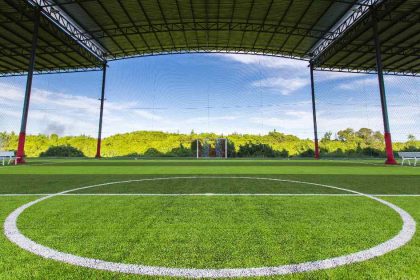When many of Australia’s military leaders and politicians gathered for the high-profile Defending Australia dinner last night at the War Memorial in Canberra – including Opposition leader Peter Dutton, US Ambassador Caroline Kennedy, UK High Commissioner Vicki Treadell and South Australian Premier Peter Malinauskas – the issue of how many Australian teenagers are currently studying advanced maths in schools across the nation may not have been far from their minds.
High-level maths enrolments at all-time low
According to Andrew Norton, a professor in higher education policy at the Australian National University, the declining number of Australian students undertaking high-level maths subjects in the final years of secondary school is at an all-time low – and it’s an issue that has serious implications for future defence industry jobs.
In an interview with Adelaide newspaper, The Advertiser, Professor Norton expressed what he described as his “long-term concern” over declining numbers of Australian students in key STEM subjects.
Australia faces critical skills shortage in defence force jobs
With the March 2023 Cooperation Agreement signing between the Federal Albanese Government and the Malinaukas Government in South Australia – outlining a commitment to support the construction of Australia’s next-generation conventionally-armed, nuclear-powered submarines in Adelaide – Professor Norton said that, without more students studying higher maths and science subjects, South Australia could face significant issues in creating a workforce capable of developing the submarines.
“That’s kind of what you need to manage an engineering degree,” he said.
In 2020, enrolment levels in advanced maths subjects in Australian secondary schools dipped to an historic low, according to data from the Australian Mathematical Sciences Institute (AMSI).
Although a recent push towards more general STEM subjects had been successful in attracting more female students towards STEM-related careers, Professor Norton said there needed to be a “laser sharp focus” on high-level maths, and the engineering skills and pathways that will accommodate the requirements of the future submarines work, and other critical defence projects.
“I think it’s going to be difficult, in some respects, because these are quite niche engineering skills with few alternative employers,” Professor Nortan told The Advertiser. “That will be a constraint on how much expansion we’ll see.”
Urgent need to attract Australian students to engineering pathways
But with results from NAPLAN showing that students performing well in high-level maths across Australia has been plunging, Professor Norton said there also might not be an increase in participation in high-level maths for some time.
“There’s a shrinking pool of people at the year 9 level who are performing at the top level in maths,” he said. “That may flow through to fewer people doing more demanding maths subjects in the next few years.”
In South Australia (SA), 1050 students studied specialist mathematics at stage 2 level, the final year of SACE in 2012. In 2022, that number was slightly lower at 992.
The added issue, according to Professor Norton, is the amount of students who are capable of undertaking high-level maths.
“A big caveat here is that there’s actually only a finite number of school leavers who have the mathematical ability to do an engineering degree,” he said.
SA Education Minister Blair Boyer said it was “incredibly important” to encourage greater enrolment in STEM subjects at South Australian secondary schools.
“It’s critical that we provide our students with access to these opportunities, particularly following the AUKUS announcement late last year,” he said.
To address the issue, Mr Boyer said that the government was undertaking “a range of things”, including the offer of $2m teaching scholarships to attract more women teaching STEM. By doing this, he said, he hoped more female students would be encouraged to imagine a career pathways for themselves.







